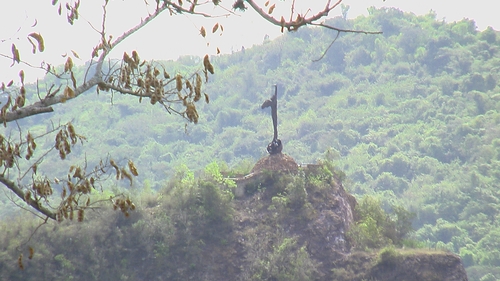

Monumento al Cimarrón, sculpture by Alberto Lescay, 1997, El Cobre, Cuba (photo web)
< 3
Lescay's giant sculptue soars into the skies from the Sierra of El Cobre. It represents the bird-like figure of the cimarrón's spirit flying into freedom enabled by the Afro cultural and religious beliefs at its core or base. Although El Cobre was never properly speaking a "palenque" or a maroon community of runaway slaves, but a colonial pueblo of royal slaves and free peopleof color, these enslaved men, women and children often engaged in acts of marronage,fleeing to the mountains to protest enslavement and make all sorts of political claims to land, local resources including ores, as well as to actual freedom and life as a pueblo. Concurrent with these acts of marronage the cobreros also resisted slavery and made claims to forms of freedom through colonial courts and through many other kinds of everyday practices. Resistance to slavery did not occur exclusively through revolts or withdrawal into the periphery of slave colonial society. "Cimarronaje" or marronage, however, has become an iconic theme in the representation of freedom and resistance to slavery throughout different locations in the African diaspora. Brazil and Colombia in particular have seen the emergence of black organizations and movements in the last few decades invoking the symbolism of marronage. |